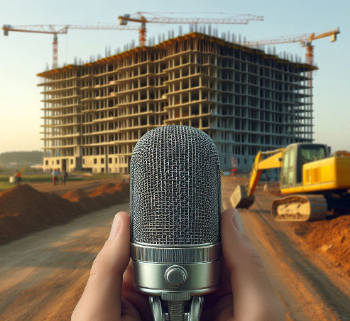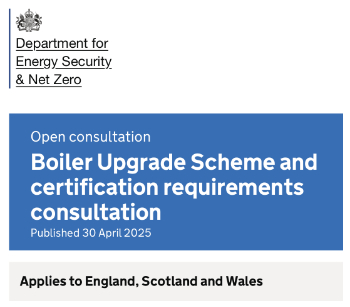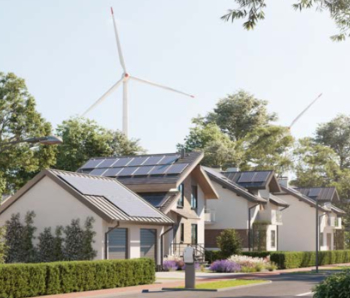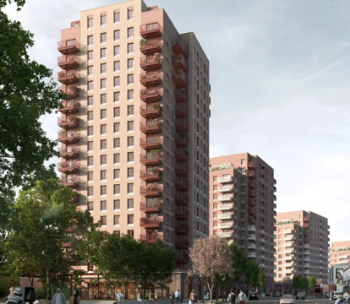Shaping Zero seeks carbon champions
Contents |
[edit] Introduction
Following the presentation of her Shaping Zero film last year, ICE President Rachel Skinner outlines the next phase of ICE's programme for the coming year - carbon champions.
[edit] From ICE President Skinner
I am delighted to be able to confirm that 2021 has started with a carbon-led bang. Shaping Zero is helping to show the world how civil engineering holds many of the keys that can slow, and eventually halt, climate change.
27 January 2021 marks the initial launch of the next part of the ICE’s shaping aero programme for 2021. I’d like to invite you all to help us, by becoming ICE carbon champions.
[edit] ICE carbon champions: be recognised for carbon best practices
To build and accelerate my Shaping Zero efforts, we are keen to recognise people and teams who are already on the path to reducing carbon. Our goal is to encourage a fast-growing team of ICE carbon champions, keen to share, collaborate and learn from each other.
[edit] Why take part?
Beyond being one of the first to secure ICE carbon champion status, we are also going to select, showcase and broadcast a range of examples through new filmed content and interviews throughout 2021. You could be a part of this – and together we can help others across the 95,000 strong ICE international community to join in with the journey to net zero carbon.
This means that we are on the hunt for case studies and evidenced stories of carbon reduction, large and small. We have kept the process as simple as possible. Any initiative, project or investment could fit with this; we want to hear from you and your team if you are making a conscious effort to cut carbon. Full details about how to submit are here, but in a nutshell:
- Your project, programme or investment can be at any stage: strategy, concept, design, construction or already in operation.
- Your initiative can be at any scale and in any sector. We want to showcase good practice from the very smallest project to the largest programme or system.
- There’s just one catch: to submit your initiative you need to have some form of measurement attached (even if very simple or from first principles) so we can understand the planned and/or actual benefit to carbon emissions.
Click this link to apply to become an ICE carbon champion
Thank you once again for taking the time to read this. I can’t wait to confirm the first group of ICE carbon champions – and I hope to be able to showcase your great ideas and best practice to the engineering industry and beyond.
Application terms and conditions and guidance can be found here.
[edit] What’s the crucial link between infrastructure, net zero carbon and climate change?
In my 17 December 2020 blog and in my Shaping Zero film, I explained net zero carbon using a bath analogy. This time, I want to explain the link between infrastructure and carbon dioxide emissions and how this is hard-wired to climate change.
Carbon dioxide is the primary driver of climate change in 2021, driving global warming along with other potent greenhouse gases. This warming is accelerating, and it is disrupting our natural systems, increasing the frequency and intensity of natural disasters and extreme weather. It poses a wholesale existential threat to our long-run future unless we can bring carbon emissions down, fast, to a ‘net zero’ level where our natural systems and technologies can cope.
- Where does the carbon dioxide come from? Since the Industrial Revolution, we’ve been burning fossil fuels to release energy – to create products and materials, run vehicles or machinery – and this releases carbon dioxide. While there is fast growth in renewable and other low carbon sources, more than 75% of the world’s ever growing energy demand is still provided by fossil fuels. And it isn’t just about energy. Concrete production also creates carbon dioxide. Each year we produce four billion tonnes of concrete for construction and infrastructure of all types. After water, in fact, concrete is the second most widely used substance on earth.
- Why does this matter to infrastructure? Because almost all of our infrastructure systems use energy: transport, buildings, water, waste, digital and so on. Nearly every time we design, build or improve a physical asset, we use materials that have a carbon impact when they are created. It gets worse: more often than not, the onward existence of the infrastructure asset itself encourages long-run, carbon-hungry behaviours as we move, live and work.
In short, a massive 70% of the world’s carbon dioxide emissions are linked to infrastructure through its creation and use. To get climate change under control, we must cut this in half by 2030.
This article originally appeared on the ICE Community Blog under the headline, 'Shaping Zero: ICE Carbon Champions. What are you going to do?' It was written by ICE President Rachel Skinner and published on 27 January 2021.
--The Institution of Civil Engineers
[edit] Related articles on Designing Buildings Wiki
- A systems approach to net-zero.
- Carbon dioxide in construction.
- Carbon neutral.
- Civil engineer.
- Climate change science.
- Energy targets for buildings.
- ICE articles on Designing Buildings Wiki.
- ICE Carbon project.
- ICE President Rachel Skinner presents Shaping Zero.
- Planning the infrastructure transition to net-zero.
Featured articles and news
Mixed reactions to apprenticeship and skills reform 2025
A 'welcome shift' for some and a 'backwards step' for others.
Licensing construction in the UK
As the latest report and proposal to licence builders reaches Parliament.
Building Safety Alliance golden thread guidance
Extensive excel checklist of information with guidance document freely accessible.
Fair Payment Code and other payment initiatives
For fair and late payments, need to work together to add value.
Pre-planning delivery programmes and delay penalties
Proposed for housebuilders in government reform: Speeding Up Build Out.
High street health: converting a building for healthcare uses
The benefits of health centres acting as new anchor sites in the high street.
The Remarkable Pinwill Sisters: from ‘lady woodcarvers’ to professionals. Book review.
Skills gap and investment returns on apprenticeships
ECA welcomes new reports from JTL Training and The Electrotechnical Skills Partnership.
Committee report criticises UK retrofit schemes
CIOB responds to UK’s Energy Security and Net Zero Committee report.
Design and construction industry podcasts
Professional development, practice, the pandemic, platforms and podcasts. Have we missed anything?
C20 Society; Buildings at Risk List 2025
10 more buildings published with updates on the past decade of buildings featured.
Boiler Upgrade Scheme and certifications consultation
Summary of government consultation, closing 11 June 2025.
Deputy editor of AT, Tim Fraser, discusses the newly formed society with its current chair, Chris Halligan MCIAT.
Barratt Lo-E passivhaus standard homes planned enmasse
With an initial 728 Lo-E homes across two sites and many more planned for the future.
Government urged to uphold Warm Homes commitment
ECA and industry bodies write to Government concerning its 13.2 billion Warm Homes manifesto commitment.
From project managers to rising stars, sustainability pioneers and more.
Places of Worship in Britain and Ireland, 1929-1990. Book review.

























